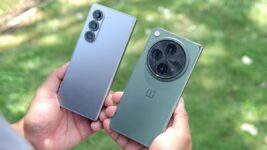We’ve seen big changes to the best foldable phones over the past year. What used to be a Samsung-dominated zone now has some new competition — and it turns out some of the new options are pretty fantastic.
Even with the arrival of newer foldables like the Galaxy Z Fold 6 and Galaxy Z Flip 6, our rankings are unchanged — the OnePlus Open is still our favorite foldable phone. And this is despite the addition of the Google Pixel 9 Pro Fold, which is a marked improvement over last year’s Pixel Fold, but still falls short in capturing the crown.
That’s a lot of phones to compare, but don’t worry — we thoroughly test each one, examining their displays, cameras and overall performance. We also look at multitasking features and other capabilities that take advantage of the unique foldable designs of these handsets.
Based on that, these are our picks for the best foldable phones you can buy right now.
The quick list
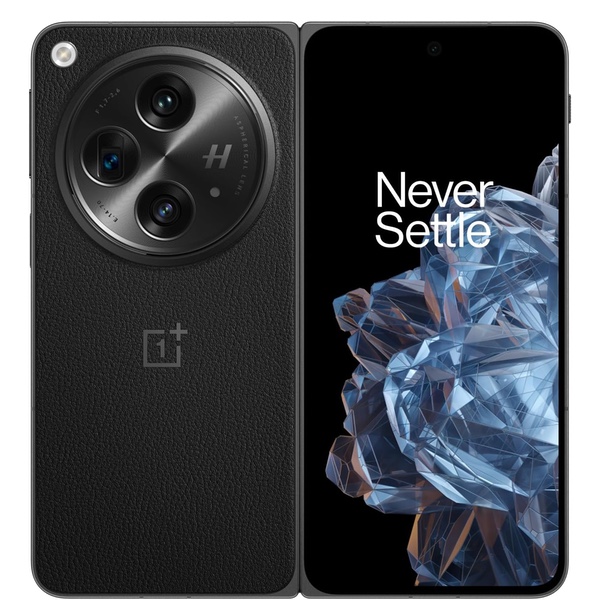
Best foldable overall
The OnePlus Open takes the foldable phone crown by offering the biggest screens at the lowest price for a notebook-style device. Its take on multitasking is the best we’ve yet seen.
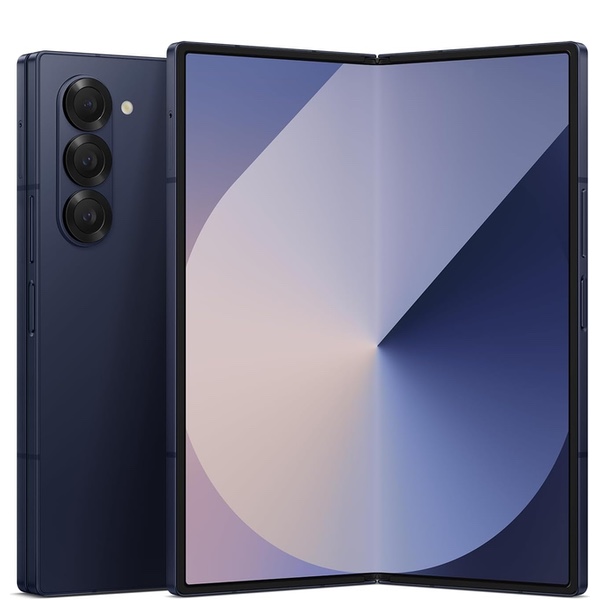
2. Samsung Galaxy Z Fold 6
Runner-up
Samsung introduced a lighter, thinner design that makes the Galaxy Z Fold 6 the most portable Fold ever. But the real star of the show in this version are the Galaxy AI features that bring new smarts that are optimized for the Fold’s design.
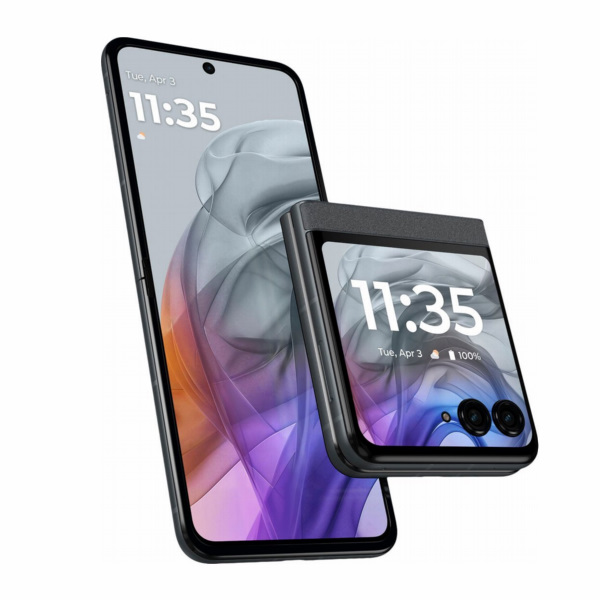
Best foldable phone value
Motorola gave the Razr 2024 a brand new design, ditching the small outer screen of its predecessor, and replacing it with a much larger one that unlocks more utility for the phone than ever before.
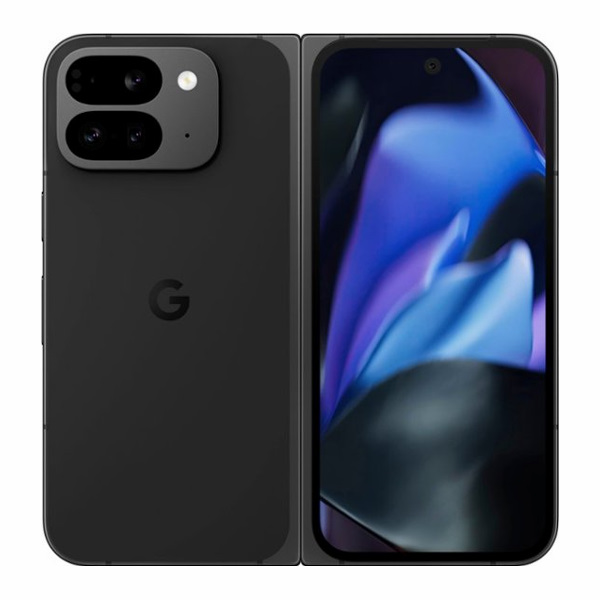
4. Google Pixel 9 Pro Fold
Best Display
The Pixel 9 Pro Fold is a much more satisfying foldable complete with AI features that make it a breeze to edit photos like a champ and the brightest screen in a foldable.

5. Samsung Galaxy Z Flip 6
Best foldable camera
Samsung boosts the main camera on its flip phone foldable to a 50MP sensor that’s also capable of delivering 2x optical-quality zoom shots. As a result, the Galaxy Z Flip 6 is a great choice when you’re looking for a foldable phone with photo skills.
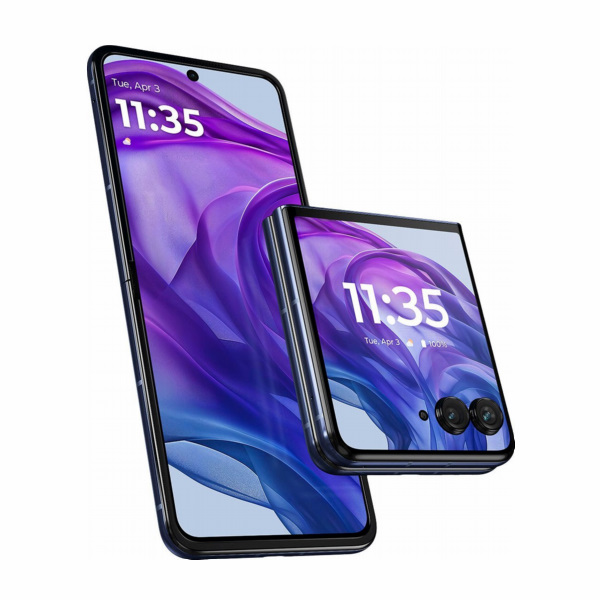
6. Motorola Razr Plus 2024
Best flip style phone
With a new telephoto lens, the Motorola Razr Plus 2024 is one of the few flip-style phones on the market that delivers better zoom to get you closer to subjects. And now you can do more with its larger outer screen as well.
Load the next products…
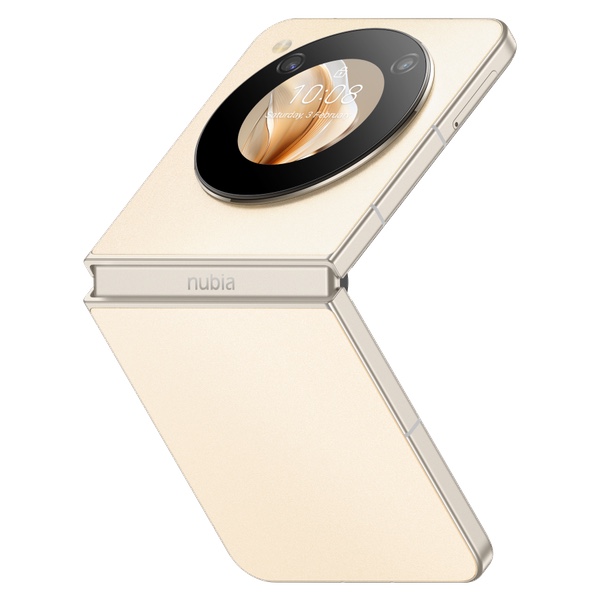
Cheapest flip phone
The Nubia Flip 5G is the least expensive foldable we’ve seen to date, with a $499 starting price. While you make some trade-offs, you still get a fast-charging phone with an attractive flip phone-style design.
The best foldable phones you can buy today
Best foldable phone overall


The OnePlus Open is the best foldable you can buy thanks to its ample screen real-estate, excellent performance and overall value. It’s $100 less than similar notebook-style foldables from Samsung and Google, which is a step in the right direction given the high prices that these kind of phones demand.
OnePlus didn’t cut too many corners to lower the price, as the Open takes excellent photos for the most part. (The exception is in low-light settings.) We also appreciate the Open Canvas multitasking features that let you run multiple apps simultaneously in any size window you want. OnePlus seems to understand that the appealing thing about foldable phones is that they double as tablets and should perform as such.
As for the displays, the 7.8-inch main screen is the largest you can get on a foldable right now, though the OnePlus Open’s hinge keeps the overall phone slender and light. This is really a great device that moves the entire foldable market forward.
If you want more — and are willing to pay up for it — you can turn to the OnePlus Open Apex Edition. This variant on the standard OnePlus Open boosts the storage to 1TB and adds an AI Smart Cutout tool that creates stickers based on the photos you capture with the phone. You get a VIP mode that turns off the phone’s camera and microphone for extra privacy.
Read our full OnePlus Open review.
Most feature rich foldable
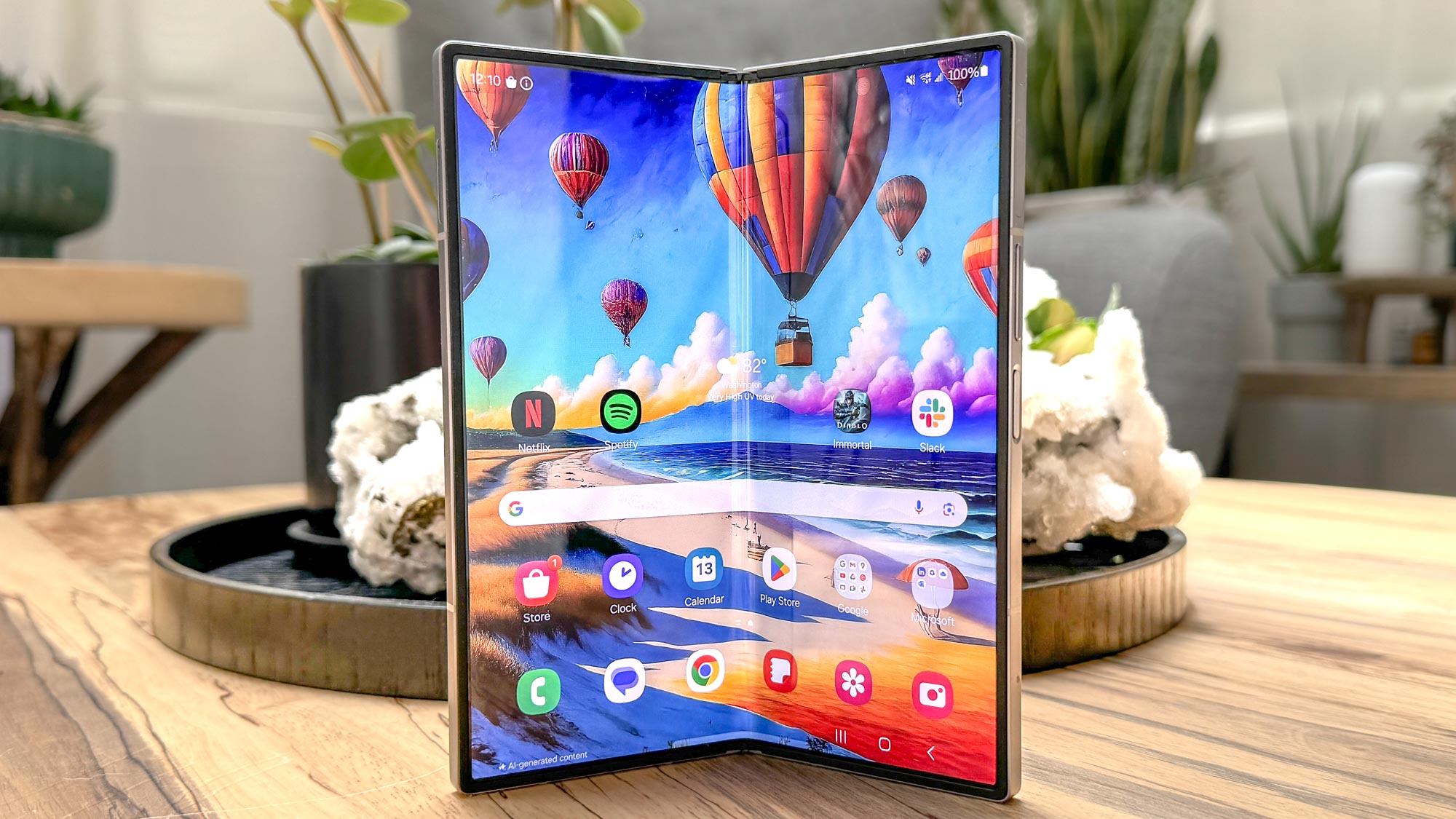
There’s a lot to like about the latest iteration of Samsung’s flagship foldable, as the Galaxy Z Fold 6 is thinner and lighter than any of its predecessor. In fact, at 8.4 ounces, it weighs as much as many conventional-designed big screen phones, which is a great advance on Samsung’s part. We also like that this improved portability didn’t come at the expense of durability, as the Galaxy Z Fold 6 features stronger glass and resistance to some dust.
The reason to turn to the Galaxy Z Fold 6 is for its Galaxy AI features. You get the same capabilities introduced earlier this year with the Galaxy S24 family, but there are a few new tools, too — and some even capitalize on the Fold’s unique design. Google Gemini is accessible from the Fold’s cover display, and Sketch to Image takes advantage of the expanded drawing surface to turn your sketches into stylized illustrations. Note Assist is particularly handy for transcribing and summarizing meeting notes.
Even though the cameras are minor upgrades over the Z Fold 5, we did notice there was much more of a disparity in our 200 photo shoot out with the Z Fold 6 vs. Z Fold 4.
We think the OnePlus Open’s superior multitasking capabilities make it a better option than the Galaxy Z Fold 6, and the higher price Samsung is charging can be off-putting. But if you’ve been reluctant to get a foldable due to durability concerns, the Galaxy Z Fold 6 puts those to rest and adds more AI skills to the mix.
Read our full Samsung Galaxy Z Fold 6 review.
Best foldable phone value
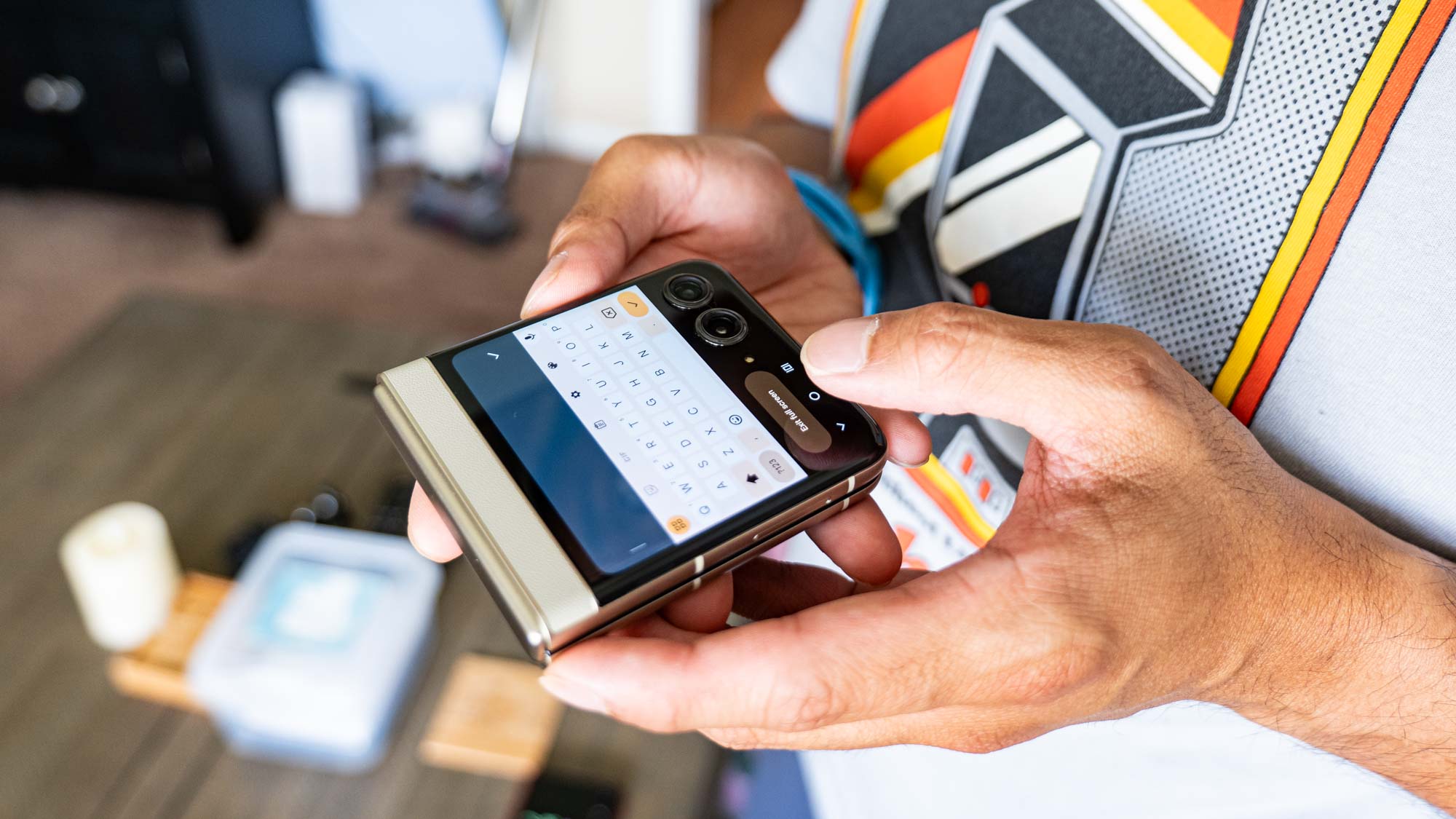
After introducing its lower cost foldable phone in 2023, Motorola came back strong with the Razr 2024 — partly because of how it’s a drastically different phone. Most notably, the company ditches the tiny outer screen and replaces it with a larger 3.4-inch one.
What vaults the Razr (2024) ahead of the more premium Razr Plus 2024 is how it balances features and price. First of all, it features a 50MP main camera paired with a 13MP ultrawide, effectively making it more user-friendly for content creators who love recording videos of themselves.
Secondly, the larger outer screen lets you use full apps, which can be handy for notifications or those times you’re just scrolling through your social feeds. Rather than opening up the phone to use those apps, they’re all accessible through the outer screen.
And finally, its $699 cost makes it the foldable phone that most people could afford. You won’t find any other flip style phone at this price.
Read our full Motorola Razr 2024 review.
Best display in a foldable
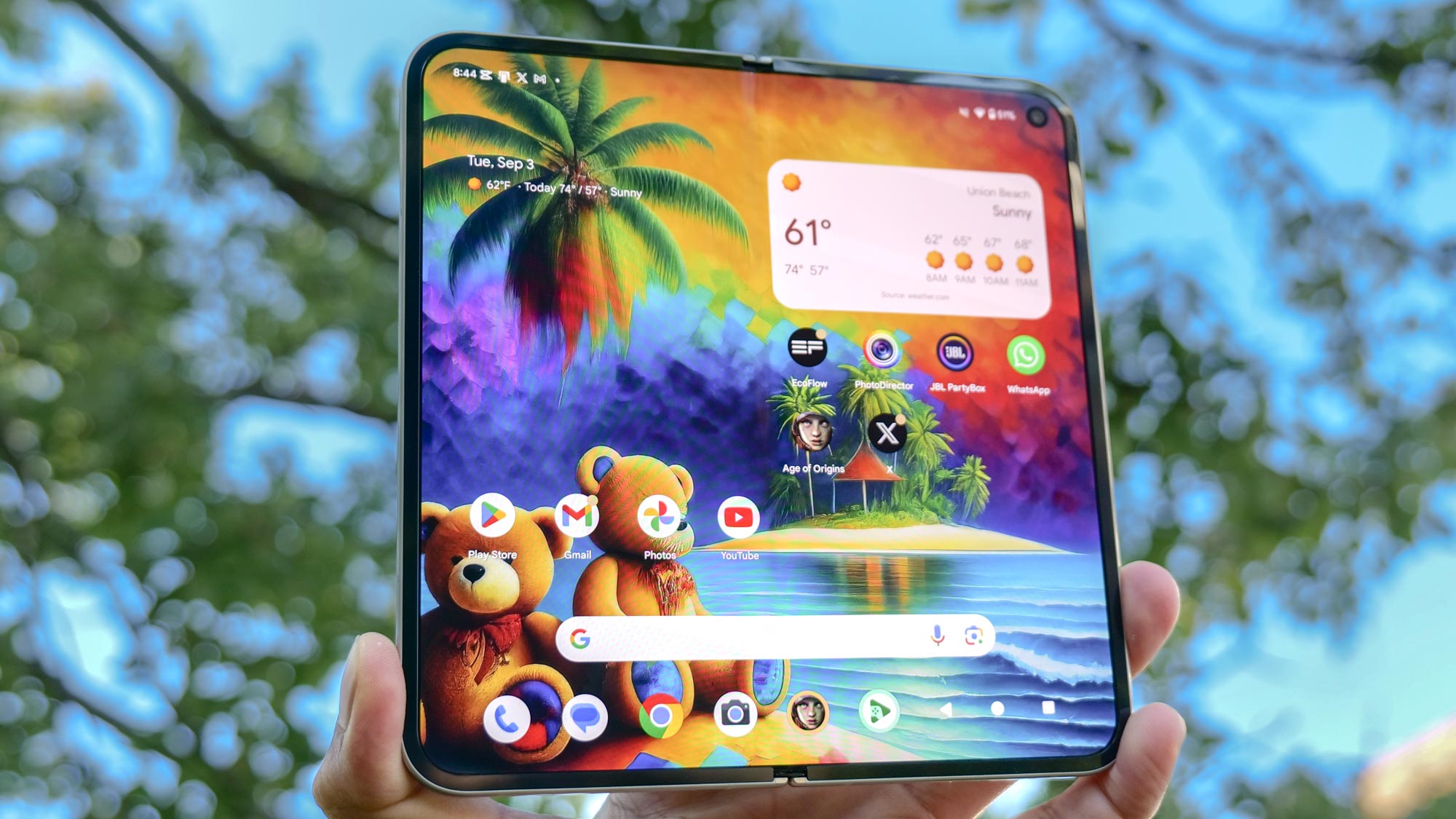
Google certainly redeems itself after a rough start because the Pixel 9 Pro Fold is a much more satisfying foldable phone. It second generation foldable phone features a thin and light redesign that matches the design qualities of its contemporaries, while packaging several new AI features.
For example, we love how Add Me lets us easily include the photographer into our photos with the help of augmented reality. Meanwhile, features such as Pixel Studio and Reimagine allows us to edit photos like a champ by simply typing in descriptions of what we want changed — resulting in realistic images that can fool some to think it’s not AI-enhanced.
On top of that, Google improves the brightness of its main display by reaching an outstanding 2,319 nits in our testing. As a result, it has the brightest screen we’ve tested in a notebook style foldable phone. And despite producing underwhelming performance benchmark scores, the Tensor G4 chip powering the Pixel 9 Pro Fold actually delivers longer battery life than its predecessor by reaching a time of 11 hours and 36 minutes in our testing.
Equally as impressive is its camera performance. In our Pixel 9 Pro Fold vs. Galaxy Z Fold 6 photo shoot out, the Pixel easily came out on top.
Read our full Google Pixel 9 Pro Fold review.
Best flip foldable for cameras
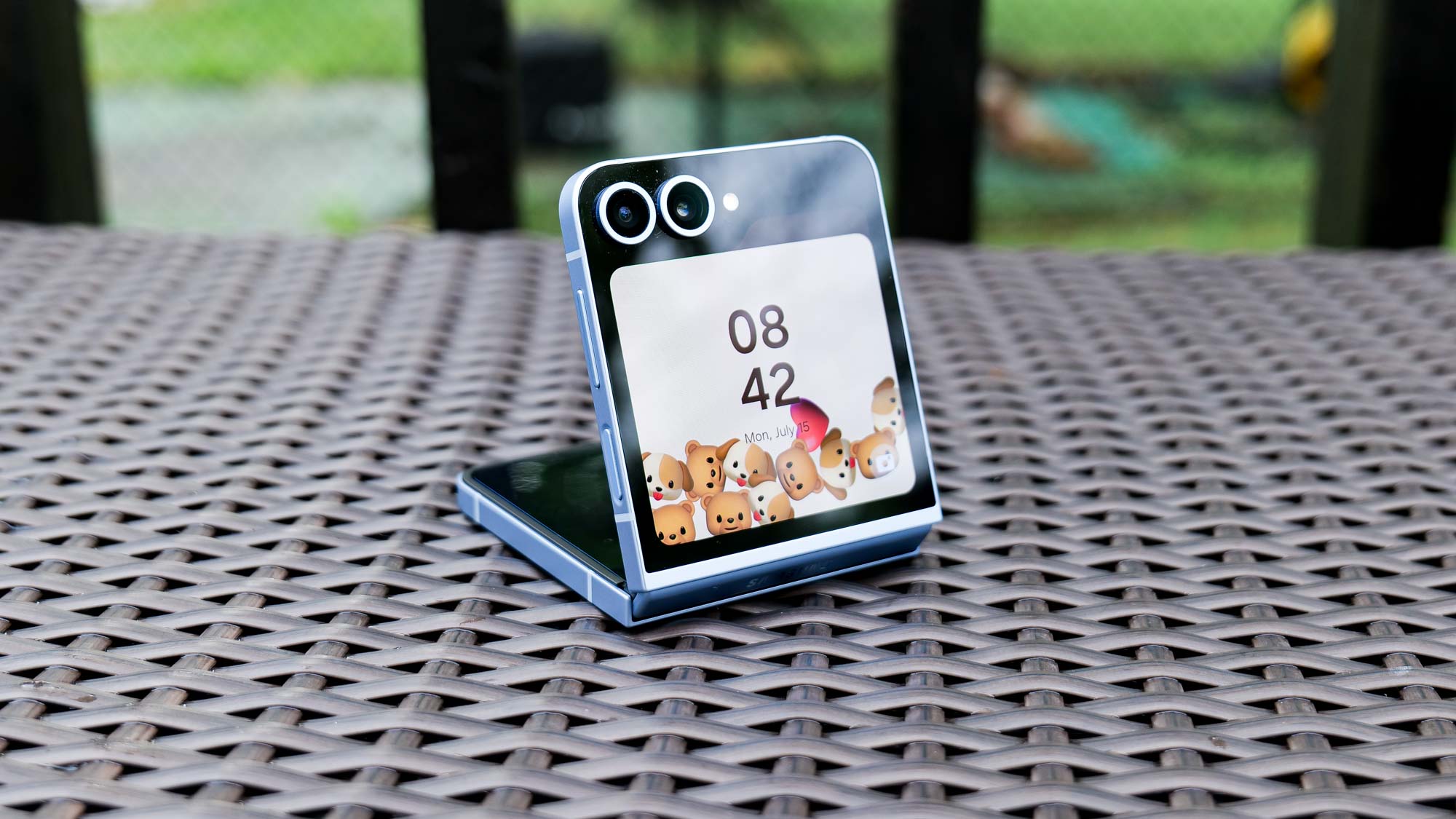
After losing some ground to Motorola’s foldable Razrs, the Galaxy Z Flip 6 from Samsung makes a comeback with some welcome improvements over previous models. The best change of the bunch involves the Flip’s main camera, which now uses a 50MP sensor instead of the 12MP all previous Flip models used. That means sharper photos and the ability to simulate a 2x zoom; we also like how the Z Flip 6 cameras performed in low light. It pulled ahead against its rival in our 200 photo shoot out between the Galaxy Z Flip 6 vs. Motorola Razr Plus (2024).
There are other changes that recommend the Galaxy Z Flip 6 like a more durable design and the addition of Galaxy AI features. We particularly like the way an interpreter feature takes advantage of the dual screens so that the person you’re speaking to can see a real-time translation of what you’re saying. Portrait Assist takes all the great photos you’re shooting with the Galaxy Z Flip 6 and gives them a stylized makeover.
You will have to pay more for the Galaxy Z Flip 6 — it’s $100 more than the Galaxy Z Flip 6 — and battery life only improved slightly in our testing. But this is a nice step forward for Samsung’s flip phone that shows the Galaxy Z Flip is up to the challenge posed by the Razr.
Read our full Samsung Galaxy Z Flip 6 review.
Best flip-style phone
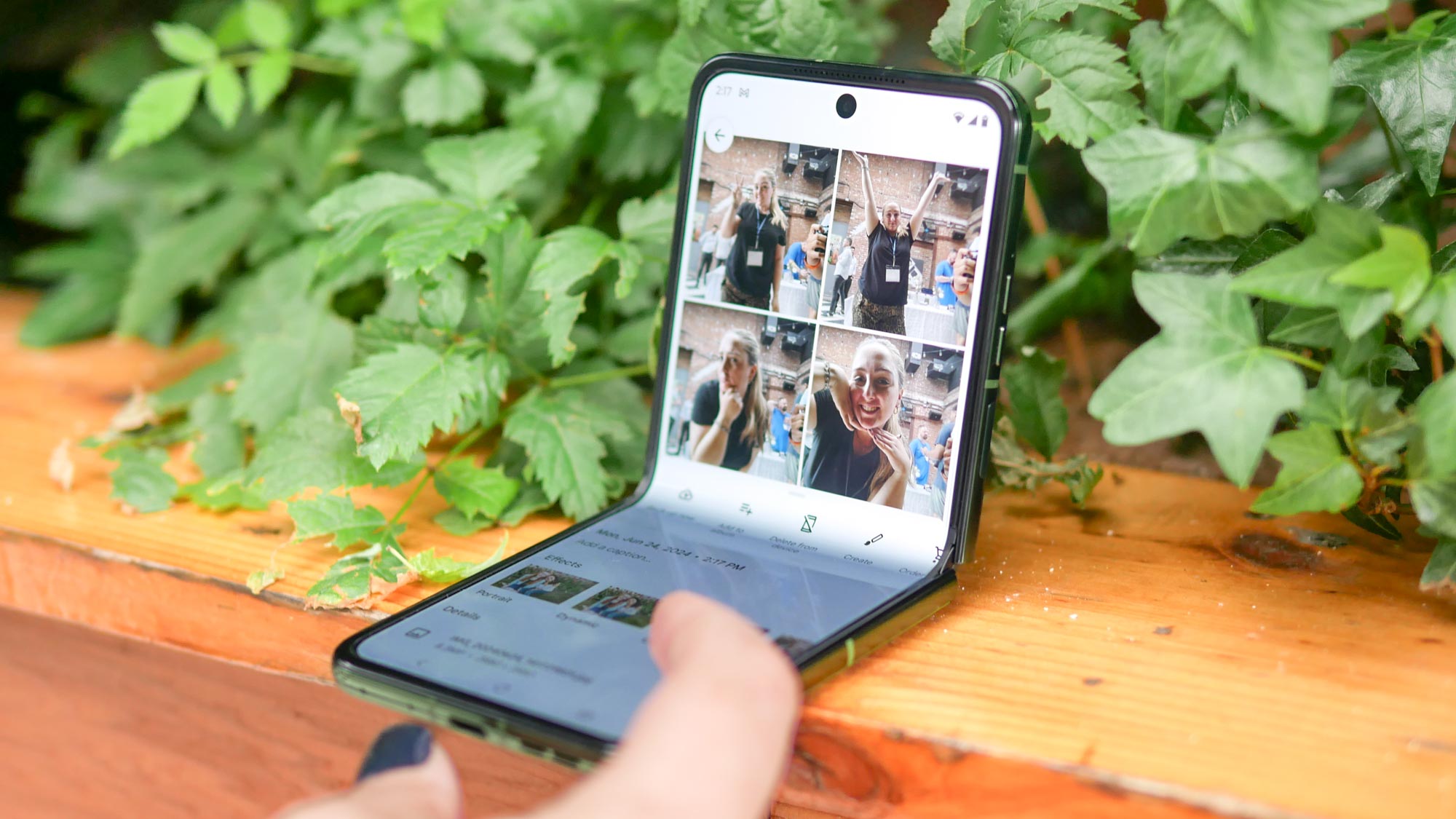
Motorola improves its Razr Plus 2024 in a big way, complete with an even larger 4-inch outer screen, which is up from its predecessor’s 3.6-inch one. There’s also more focus in personalizing with more widgets to choose from, as well as the ability to stitch several ones for more convenience.
In addition to a larger outer screen, Moto fashions in a 50MP telephoto camera with 2x optical zoom that pairs nicely with its main 50MP one. It’s great to get closer to your subjects than before, while its updated camcorder mode can now record video in either horizontal or vertical. And even though its sibling is higher on our list, we determined that the Razr Plus (2024) offers a better camera performance in our 200 photo shoot out between the Razr Plus (2024) vs. Razr (2024).
And then there’s the design, which now feels much more solid with its folding mechanism thanks to a redesigned hinge that’s smaller. Several color options are available too, which helps to complement its already outstanding design.
Read our full Motorola Razr Plus 2024 review.
Least expensive foldable phone
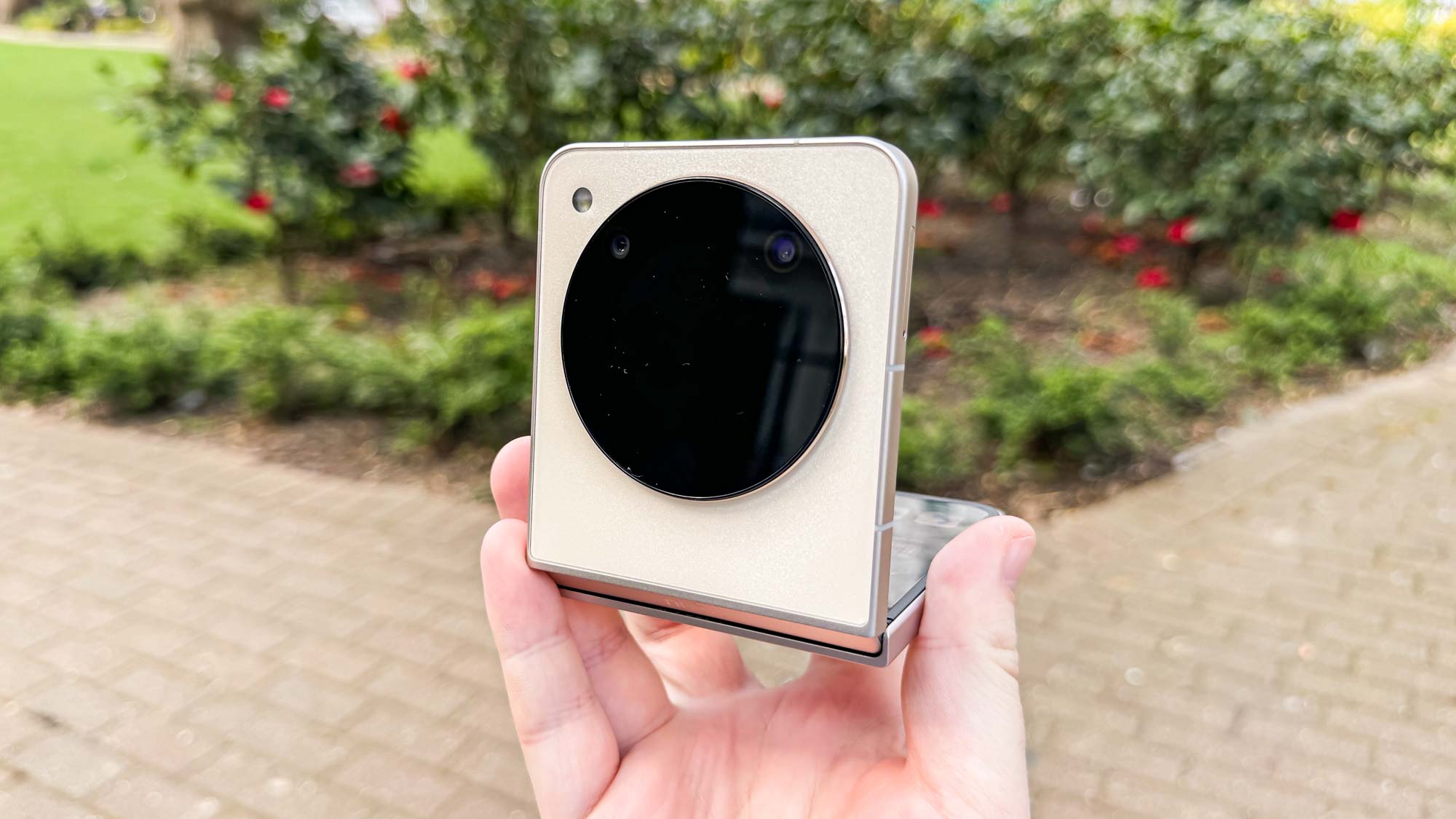
There’s no question that the Nubia Flip 5G is limited compared to the other entries on our list of best foldable phones. Camera quality, in particular, is subpar and you’re likely to get limited software updates. But with a starting price of $499, the Nubia Flip 5G also figures to get foldables in the hands of more people, and that’s a positive step.
Those who get the Nubia Flip 5G will get a stylish design with a smudge-resistant matte texture. The overall look of the phone suggests you paid a lot more for this flip phone-style device than you did. You’ll also appreciate the 6.9-inch display that’s available when you open up the Nubia Flip 5G.
Battery life seemed so-so in our everyday use, but at least the Nubia Flip 5G offers peppy 33W charging that can top off the phone’s battery quickly. If you want a foldable phone, but can’t afford a more premium model, you certainly won’t feel short-changed by this option.
Read our full Nubia Flip 5G review.
What to look for in a foldable phone
Before you buy a foldable phone, you’ll need to consider what that kind of device will be able to do for you that a standard phone can’t. With the exception of the $699 Motorola Razr, most foldables still cost $1,000 or more. Unless you really need the extra screen real estate, you may be better off with a phablet or one of the other best big phones that we’ve tested.
If you do think a foldable phone will help you get more done, though, be sure to pay attention to the device’s construction. Early foldable phones like the Galaxy Fold and original Motorola Razr had design quirks that led us to pan those handsets. With the Galaxy Z Fold 2 in 2020, though, Samsung made some critical changes that made the phone more likely to withstand everyday use, and that work has continued with subsequent models. After adding water-resistance to the Galaxy Z Fold 3, Samsung worked on a lighter, slimmer hinge for its latest foldables like the Galaxy Z Fold 5 and Z Flip 5.
There are two screens to consider when buying a foldable phone — the larger internal display and a secondary screen, usually on the outside of the device. Find out just what you can do with that exterior screen — can you run full apps or is it just there for notifications and a few other features? And does the screen support something like Samsung’s continuity feature where the app you’re using on the cover screen is waiting for you when you open the device?
Apart from size — you’ll want to make sure a closed foldable phone is something you’re comfortable carrying around — you’re looking at a lot of the same criteria you’d use to judge conventional phones. That includes the processor, cameras and — especially — the battery life. After all, there are usually multiple screens to keep powered up on a foldable phone.
How we test foldable phones
We test for the best foldable phones the same way we review any smartphone. (See our look at how Tom’s Guide tests and review smartphones for a more detailed explanation of our process.) We conduct lab tests, including synthetic benchmarks as Geekbench 5 and 3DMark Wild Life Unlimited to measure graphics performance. We also run a real-world video transcoding test on each phone using the Adobe Premiere Rush app and time the result.
| Row 0 – Cell 0 | Geekbench (single-core / multicore) | 3DMark Wild Life Unlimited (FPS) | Adobe Rush Premiere (minutes, seconds) |
| OnePlus Open | 1,087 / 4,203 | 84.8 | 1:08 |
| Galaxy Z Fold 6 | 2,172 / 6,901 | 112.3 | 0:40 |
| Motorola Razr 2024 | 1,055 / 2,999 | 18.97 | 0:54 |
| Pixel 9 Pro Fold | 1,956 / 4,813 | 55.72 | N/A |
| Galaxy Z Flip 6 | 2,091 / 7,022 | 113.4 | 0:46 |
| Motorola Razr Plus 2024 | 1,834 / 4,848 | 73.74 | N/A |
| Nubia Flip 5G | 1,074 / 3,074 | 4.99 | 1:44 |
To measure the quality of a phone’s display, we perform lab tests to determine the brightness of the panel (in nits), as well as how colorful each screen is (DCI-P3 color gamut). In these cases, higher numbers are better. We also measure the color accuracy of each panel with a Delta-E rating, where lower numbers are better and a score of 0 is perfect.
| Row 0 – Cell 0 | Brightness(nits) | DCI-P3 (%) | Delta-E |
| OnePlus Open | 1,158 | 79.2 (Natural), 76.6 (Pro), 120.2 (Vivid) | 0.14 (natural), 0.17 (Pro), 0.29 (Vivid) |
| Galaxy Z Fold 6 | 2,317 | 96.6 (Vivid) | 0.24 (Vivid) |
| Motorola Razr (2024) | 2,104 | 134 (Vivid), 81.7 (Natural) | 0.4 (Vivid), 0.28 (Natural) |
| Pixel 9 Pro Fold | 2,319 | 125.9% (Adaptive), 111.4% (Natural) | 0.33 (Adaptive), 0.19 (Natural) |
| Galaxy Z Flip 6 | 1,942 | 96.2 (Vivid), 84.9 (Natural) | 0.24 (Vivid), 0.24 (Natural) |
| Motorola Razr Plus 2024 | 2,158 | 69.5 (Natural) | 0.23 (Natural) |
| Nubia Flip 5G | N/A | N/A | N/A |
We run a custom battery test in which we have the phone surf the web over cellular with its screen set to 150 nits of brightness. We then time how long it takes the phone to run out of power. For foldable phones, we conduct this test on the phone’s main display.
| Row 0 – Cell 0 | Battery Life (hours:minutes) | Recharge level at 15 minutes (%) | Recharge level at 30 minutes (%) |
| OnePlus Open | 12:07 | 50% | 85% |
| Galaxy Z Fold 6 | 10:35 | 28% | 56% |
| Motorola Razr 2024 | 14:37 | 33% | 58% |
| Pixel 9 Pro Fold | 11:36 | 18% | 38% |
| Galaxy Z Flip 6 | 11:01 | 27% | 55% |
| Motorola Razr Plus 2024 | 14:13 | 27% | 48& |
| Nubia Flip 5G | N/A | N/A | N/A |
We also test the cameras on each foldable phone, taking them out into the field to perform comparative shots, usually with another device that features comparable specs. In some cases, that’s a foldable phone or another device in the same price tier.
